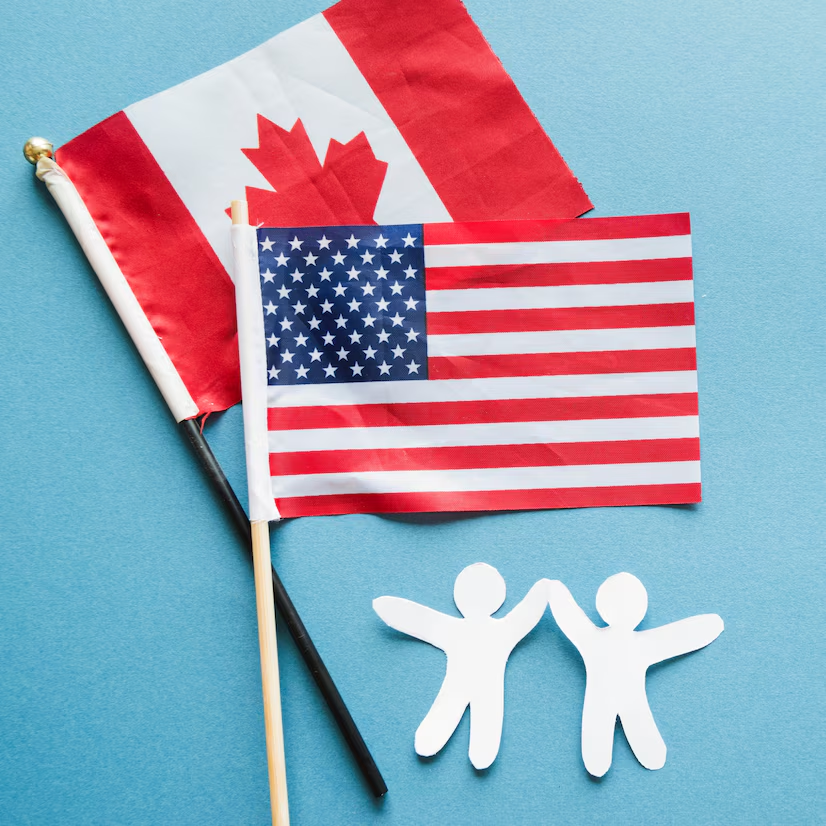Hey there, future Canadian graduates! If you’re studying in Canada and planning to work after finishing your studies, there’s some important news you should know about. The Canadian government has announced a significant change: starting June 21, 2024, you can no longer apply for a Post-Graduation Work Permit (PGWP) at the border—a process known as ‘flagpoling’. In this blog post, we’ll explain what flagpoling is, why it’s being phased out, and how these changes will affect you. Plus, we’ll go over new measures introduced to make the work permit application process smoother for everyone. Let’s dive in! Canada Move Away from Flagpoling
What is Flagpoling?
Flagpoling is a strategy that many international students and temporary residents in Canada have used to fast-track their work or study permit applications. Instead of waiting for their application to be processed online, they would leave Canada briefly (usually to the United States) and re-enter to get their permit processed immediately at the border. This approach allowed them to bypass the lengthy wait times that come with online applications. Canada Move Away from Flagpoling

Why Did People Use Flagpoling?
The main reason people used flagpoling was to avoid the long processing times associated with online applications. When applying online, it can take weeks or even months to receive a permit. This delay can be a significant barrier, as applicants might not be able to work or continue their studies during this period. Flagpoling offered a quick solution, allowing students and temporary residents to continue their activities without interruption. Canada Move Away from Flagpoling
Why is Flagpoling Ending?
The decision to end flagpoling stems from several operational and logistical challenges it presents. Primarily, it has created significant congestion and delays at border entry points, diverting customs officers from other critical tasks. Canada Move Away from Flagpoling
Impact on Border Services
Flagpoling has put a considerable strain on Canadian border services. Customs officers have had to manage a high volume of individuals seeking same-day immigration services, which detracts from their ability to handle other important responsibilities, such as managing high-risk individuals and facilitating trade. To alleviate these issues, the government has reduced flagpoling hours at 12 entry points across the country, allowing officers to better manage the flow of visitors and focus on their core duties. Canada Move Away from Flagpoling
What Does This Mean for International Students?
For international students planning to stay and work in Canada after graduation, the end of flagpoling means that you will need to apply for your PGWP online and wait for it to be processed within Canada.
Validity of Study Permits
Typically, your study permit remains valid for up to three months after the expected completion date of your study program. This grace period is designed to give you time to apply for a PGWP. If you apply for a PGWP before your study permit expires, you are allowed to work full-time while your application is being processed. You will receive an automated notification from Immigration, Refugees and Citizenship Canada (IRCC), which serves as proof of your eligibility to work.
Application Processing Times
Knowing the processing times for various permits is crucial for planning your transition from student to worker. As of July 3, 2023, the average processing times are:
- Study permit (outside Canada): 5 weeks
- Study permit (inside Canada): 12 weeks
- Work permit (outside Canada): 19 weeks
- Work permit (inside Canada): 102 weeks
These processing times highlight the importance of applying early and ensuring your application is complete to avoid unnecessary delays.
Government Measures to Improve the Process
To make up for the end of flagpoling, the Canadian government has introduced several measures aimed at improving the application process for work permits. These steps are designed to make it easier for foreign nationals to apply for and receive their permits without leaving the country.

Faster Processing Times
One of the main goals is to speed up processing times for in-Canada work permit applications. By enhancing the efficiency of the application process, the government aims to reduce wait times, making it easier for applicants to transition smoothly from student to worker status.
Simplified Application Process
The government is also working on simplifying the online application forms and processes. This simplification will help ensure that foreign nationals can continue working while they wait for a decision on their application. The aim is to make the process more user-friendly and reduce the likelihood of errors that could delay the application.
Immediate Work Authorization
A significant change is the authorization for workers to start working for a new employer immediately upon submitting their work permit application. This means that individuals will no longer have to wait for their new work permit application to be processed before they can change jobs. This change is particularly beneficial for those who need to switch employers quickly.
Impact on the Student and Temporary Resident Community
The end of flagpoling and the introduction of new measures will significantly impact the international student and temporary resident community in Canada. While the elimination of flagpoling might seem like a setback, the government’s efforts to streamline the application process and reduce wait times should ultimately benefit applicants.
Adapting to the New System
For students and temporary residents, adapting to the new system will require careful planning and attention to detail. It’s essential to understand the new procedures and ensure that all application materials are submitted accurately and on time. Taking advantage of the simplified application process and understanding the new work authorization rules will be crucial for a smooth transition.
Encouraging In-Canada Applications
The Canadian government is encouraging more applicants to apply within Canada by improving processing times and making the application process more efficient. From March 1, 2023, to February 29, 2024, PGWP applicants made up about one-fifth of those attempting to flagpole. By improving the application process and reducing wait times, the government aims to reduce reliance on flagpoling and encourage more in-Canada applications.
Benefits of In-Canada Applications
Applying for a work permit within Canada has several benefits. First, it eliminates the need to travel and deal with the logistics of leaving and re-entering the country. Second, it allows applicants to remain in Canada and continue their activities while their application is being processed. Finally, the improvements in processing times and the simplified application process should make the overall experience more efficient and less stressful.
Preparing for the Application Process
To ensure a smooth application process for your PGWP, it’s important to be well-prepared. Here are some steps you can take to make sure your application is successful:
Gather All Necessary Documents
Before you begin your application, make sure you have all the necessary documents. This typically includes your passport, study permit, proof of graduation, and any other required forms. Having all your documents ready will help prevent delays in the application process.
Understand the Application Process
Take the time to understand the application process and the requirements for a PGWP. Review the IRCC website for the most up-to-date information and guidelines. Familiarizing yourself with the process will help you avoid common mistakes and ensure that your application is complete.
Apply Early
Don’t wait until the last minute to apply for your PGWP. Applying early will give you more time to address any issues that may arise and ensure that your application is processed before your study permit expires. Remember, you can apply for a PGWP up to 180 days after completing your study program.
Stay Informed
Stay informed about any changes to the application process or requirements. The Canadian government may introduce new measures or update existing ones, so it’s important to stay up-to-date. Regularly check the IRCC website and consider subscribing to updates or newsletters.
Conclusion: The end of flagpoling for PGWP applications marks a significant change for international students and temporary residents in Canada. While this change may initially seem challenging, the Canadian government’s efforts to streamline the application process and reduce wait times should ultimately make the process more efficient and less stressful. By understanding the new procedures and preparing your application carefully, you can ensure a smooth transition from student to worker in Canada.
If you have any questions or need further assistance, consider consulting with a trusted immigration advisor or visiting the official IRCC website for more information. Your journey from student to professional in Canada can be a rewarding experience with the right preparation and support.

Disclaimer
The information provided in this blog post is for general informational purposes only and is not intended to be legal advice or to substitute for professional immigration guidance. Immigration policies and procedures can change frequently, and while we strive to ensure the accuracy and timeliness of the information presented, we cannot guarantee that all details are current or applicable to your specific situation.
Source: www.financialexpress.com
Canada Citizenship Requirements: Everything You Need to Know
The Rise and Challenges of Canada’s Temporary Foreign Worker Program
Comprehensive Guide to Canada’s Express Entry Draw Results and the Provincial Nominee Program
Also read:
- How Trump’s New Tariffs on Canada Could Affect Indian Students Studying Abroad
- How to Improve English & Communication Skills in Australia
- Scholarship Opportunities for International Students in Melbourne
- Top Tips for International Students in Melbourne – Your Ultimate Guide by OM Visa
- Mass U.S. Visa Cancellations in Colombia: What Travelers Need to Know

